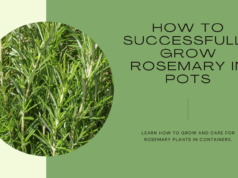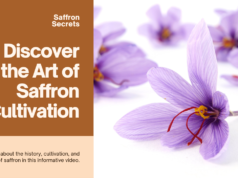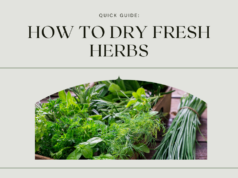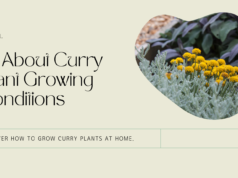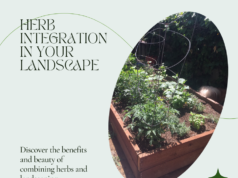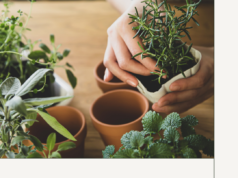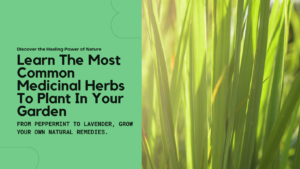
If you’re looking for a natural way to promote your health and wellness, then growing common medicinal herbs in your garden could be the solution you’ve been looking for. These herbs are easy to plant and maintain, making them an excellent addition to any garden. Not only do medicinal herbs offer natural remedies for common ailments, but they also provide a wide range of aromatic flavors that you can incorporate into your daily life for a sensory experience.
By planting common medicinal herbs in your garden, you’ll have convenient access to fresh herbs that can help you manage stress, aid digestion, and boost overall health. Additionally, growing medicinal herbs at home means you can avoid the use of chemicals or additives commonly found in store-bought products.
Key Takeaways:
- Common medicinal herbs are easy to grow in your garden and provide natural remedies for common ailments.
- Medicinal herbs offer a range of aromatic flavors that enhance your everyday life.
- Growing herbs at home means avoiding chemical additives commonly found in store-bought products.
- Medicinal herbs can aid in stress management, digestion, and overall wellness.
- By cultivating these herbs at home, you will have easy access to fresh herbs that can be used in various ways to enhance your overall well-being.
Benefits of Growing Medicinal Herbs in Your Garden
Having a garden is a wonderful and fulfilling experience, and when you cultivate your medicinal herbs, it becomes even more fulfilling. Growing medicinal herbs in your garden offers numerous benefits, from easy access to natural remedies to enhancing your overall health and well-being. When you grow these herbs yourself, you know exactly where they come from and what they contain, ensuring that you use only the purest and freshest ingredients in your homemade remedies. Additionally, growing herbs in your garden is a sustainable and cost-effective way to obtain natural remedies, reducing the need for store-bought products and wasteful packaging.
Moreover, nurturing plants in your garden also offers other benefits such as reducing stress and improving mental health, encouraging physical activity, and creating a beautiful and serene outdoor space.
Advantages of Growing Medicinal Herbs in Your Garden
| Advantages | Description |
|---|---|
| Self-sufficiency | You control the quality of herbs and have access to natural remedies. |
| Sustainability and cost savings | Growing herbs at home can reduce the need for costly store-bought products and wasteful packaging. |
| Enhanced health and well-being | Herbs have therapeutic properties that can improve health and reduce stress. |
| Eco-friendliness | By growing herbs at home, you can reduce your carbon footprint and contribute to the ecosystem. |
Incorporating medicinal herbs into your garden is not only beneficial for your health, but it is also an enjoyable and rewarding experience that fosters a deeper connection with nature.
Factors to Consider Before Planting Medicinal Herbs
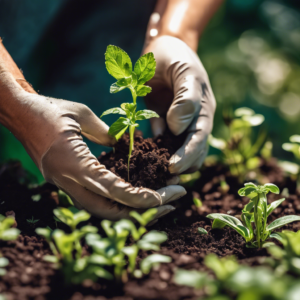
Are you thinking about planting medicinal herbs in your garden? Before you start, it’s essential to consider a few factors to ensure successful growth and harvesting of these natural remedies.
Climate
Firstly, think about your local climate and whether it’s suitable for the medicinal herbs you want to plant. Some herbs thrive in warm, sunny weather, while others prefer cooler temperatures and shade. Research the specific needs of each herb to ensure optimal growth in your region.
Available Space
Another factor to consider is the amount of available space in your garden. Some herbs require significant room to grow, while others can thrive in small containers. If you have limited space, consider vertical gardening or using raised beds to maximize planting area.
Soil Conditions
The quality and consistency of your soil play a crucial role in the growth and potency of medicinal herbs. Before planting, test your soil to determine its pH level and nutrient content. Some herbs, such as lavender, prefer well-draining soil, while others, like mint, thrive in moist, rich soil.
Maintenance Requirements
Finally, consider the maintenance requirements of the herbs you want to plant. Some varieties require frequent watering, pruning, and fertilization, while others are low-maintenance. Ensure you have the time and resources to meet the needs of each herb to ensure successful growth and maximum health benefits.
Mint: Benefits and Uses of Mint as a Medicinal Herb
If you’re looking for a natural solution to various health concerns, look no further than mint. This beloved herb boasts several benefits that can help you achieve optimal well-being.
Mint Benefits
- Aids in Digestion: Mint has carminative properties, which can help soothe digestive issues, including indigestion, bloating, and gas.
- Relieves Headaches: The menthol found in mint can help alleviate headache pain by promoting blood circulation and acting as a natural analgesic.
- Soothes Respiratory Issues: Mint contains rosmarinic acid, which has been shown to have anti-inflammatory properties that can help minimize respiratory symptoms like asthma and allergies.
Mint is versatile and easy to incorporate into your daily routine as a natural remedy.
| Use | Description |
|---|---|
| Herbal Remedies | Mint can be used in traditional herbal remedies as a natural treatment for various health issues. |
| Teas and Infusions | Mint is a popular ingredient in teas and infusions and is known to aid digestion and promote relaxation. |
| Cooking | Mint adds a refreshing flavor to a variety of dishes, including salads, smoothies, and desserts. |
| Skincare | Mint can be used in skincare products for its anti-inflammatory and antioxidant properties, making it a great ingredient for reducing skin irritation and promoting healthy skin. |
If you’re interested in growing mint in your garden, it’s important to note that this herb requires regular watering and well-draining soil to thrive. To care for your mint plant, make sure to trim it regularly and harvest the leaves when they’re mature to encourage healthy growth.
Tips for Planting and Caring for Mint in Your Garden
Mint is a versatile herb that offers a refreshing taste and a host of health benefits. Here are some helpful tips for successfully planting and caring for mint in your garden:
- Choose the right location: Mint thrives in moist soil and partial shade. Find a spot in your garden that receives morning sun and afternoon shade. You can also grow mint indoors in a pot near a sunny window.
- Prepare the soil: Mint prefers well-draining soil that’s rich in organic matter. Add compost or aged manure to your garden bed before planting.
- Plant mint: You can plant mint seeds or cuttings directly into the soil. Plant each mint cutting about 18 inches apart to prevent overcrowding.
- Water regularly: Mint needs consistent watering to thrive; however, it’s essential not to overwater. Check the soil moisture regularly and water when the top inch of soil feels dry.
- Harvest regularly: Regular harvesting promotes bushy growth and prevents your mint from getting leggy. Harvest the leaves regularly, pinching off the top portions of the plant. The best time to harvest mint is in the morning when the leaves are the most flavorful.
- Prune regularly: Pruning helps keep your mint plant in shape and prevents it from becoming too woody. Cut back a third of the plant’s stems every few weeks.
By following these tips, you’ll be able to grow a healthy and productive mint plant in your garden. Enjoy this versatile herb in a refreshing iced tea or use it to add flavor to your favorite recipe!
Lavender: Health Benefits and Uses of Lavender as a Medicinal Herb
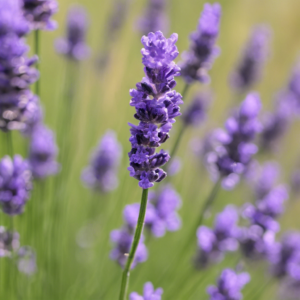
Lavender is a versatile medicinal herb that offers a wide range of health benefits. From promoting relaxation and good sleep to soothing skin conditions, lavender is a go-to herb for many health concerns.
The calming properties of lavender are well-documented, making it an ideal herb to use for stress relief and anxiety reduction. By inhaling the scent of lavender essential oil or drinking lavender tea, you can feel a sense of calm wash over you, allowing you to relax and unwind.
In addition to its calming properties, lavender is also known for its ability to promote good sleep. Drinking a cup of lavender tea before bed can help you fall asleep faster and stay asleep longer. You can also place a lavender sachet under your pillow or diffuse lavender essential oil in your bedroom to promote a restful night’s sleep.
“Lavender is a versatile and powerful herb that can help enhance your overall well-being. Incorporating this fragrant herb into your daily routine could lead to numerous health benefits and a more relaxed and restful life.”
Lavender also has skin-soothing properties and can be used to relieve a variety of skin conditions, such as burns, insect bites, and acne. Lavender essential oil can be applied topically to the affected area or added to a bath for a relaxing and rejuvenating soak.
To reap the health benefits of lavender as a medicinal herb, consider planting it in your garden. Lavender plants thrive in well-draining soil and full sun, and require minimal water once established. By growing your own lavender, you can have a ready supply of this versatile herb at your fingertips.
Guide to Growing and Maintaining Lavender Plants
Lavender is a beautiful and fragrant herb that can provide a variety of health and wellness benefits. Whether you want to use it in recipes, skincare products, or as a natural remedy, growing lavender in your garden can be a rewarding experience.
Choosing the Right Lavender Variety
When deciding which lavender plants to grow, it’s essential to choose the right variety for your climate and intended use. Some popular lavender varieties include English lavender (Lavandula angustifolia), French lavender (Lavandula dentata), and Spanish lavender (Lavandula stoechas). English lavender is a commonly grown variety known for its fragrant and calming properties.
Planting Lavender
Lavender plants prefer well-draining soil and full sun exposure. It’s best to plant them in the spring or early fall to ensure healthy growth. Be sure to space them out appropriately, as lavender plants can grow up to 3 feet wide.
- Choose a location with plenty of sun exposure and well-draining soil.
- Water the plants regularly, but be careful not to overwater them.
- Use a natural fertilizer to help nourish the plants.
- Prune the plants in the spring to promote new growth and prevent woody stems.
Harvesting Lavender
Lavender blooms in the summer months and can be harvested for culinary or medicinal purposes. Harvest the flowers when they are in full bloom, cutting the stems to the desired length and removing any excess foliage. Dried lavender bundles can be used to scent rooms or added to bathwater for a relaxing soak.
Note: Lavender can attract bees and other pollinators to your garden, so be sure to take appropriate precautions and wear protective clothing if needed.
By following these tips for growing and maintaining lavender plants, you can enjoy the beauty and benefits of this versatile herb in your garden.
Chamomile: Medicinal Properties and Uses of Chamomile
If you’re seeking a gentle and soothing medicinal herb, look no further than chamomile. This herb has been used for centuries to promote relaxation, reduce inflammation, and address various health concerns. Chamomile is commonly known for its sweet, apple-like fragrance and is a member of the daisy family.
Chamomile tea is a popular and easy way to enjoy the herb’s beneficial properties. The tea is known for its calming and sleep-inducing effects, making it a popular choice for those seeking natural remedies for insomnia and anxiety. Additionally, chamomile is known for its anti-inflammatory properties, making it useful for treating skin irritations, reducing menstrual cramps, and soothing digestive issues.
Chamomile can also be used topically as a natural skincare ingredient. Its anti-inflammatory properties make it especially useful for soothing skin irritation, reducing redness, and promoting healthy skin. The herb can be added to homemade soaps, lotions, and facial toners for a soothing and nourishing effect.
Chamomile Health Benefits:
- Promotes relaxation and sleep
- Reduces inflammation and eases pain
- Soothes menstrual cramps
- Supports digestive health and soothes stomach issues
- Has anti-bacterial and anti-fungal properties
Overall, chamomile is a versatile and gentle medicinal herb that offers a range of health benefits. Whether enjoyed in a warm cup of tea or used in natural skincare products, chamomile is an excellent addition to any herbal medicine cabinet.
Echinacea: Health Benefits and Uses of Echinacea as a Medicinal Herb
If you’re looking for a natural way to boost your immune system and fight off colds and flu, echinacea is a powerful herb worth considering. Native to North America, this medicinal herb has been used for centuries to promote health and wellness.
Echinacea boasts a variety of health benefits due to its active compounds such as flavonoids, polysaccharides, and alkamides, which have been shown to possess antioxidant, anti-inflammatory, and immunostimulatory properties. Some of the benefits of echinacea include:
- Enhancing immune system function
- Reducing the duration and severity of cold and flu symptoms
- Relieving pain and inflammation
- Preventing respiratory infections
- Lowering blood sugar levels
To fully enjoy the benefits of echinacea, it’s essential to know how to grow and harvest it effectively. Echinacea thrives in well-draining soil and partial sunlight, and it’s best to plant it in the spring or fall. Be sure to water your echinacea plants regularly, and avoid over-fertilizing them. When harvesting echinacea, wait until the plant has reached full maturity before collecting the aerial parts, typically from the second year of growth. You can store the dried echinacea in a tightly sealed container in a cool, dry place for up to a year.
| Name | Description |
|---|---|
| Angustifolia | This variety has narrow leaves and a conical-shaped seed head. It’s known for its high concentration of echinacoside, one of the plant’s primary active compounds. |
| Purpurea | Also called purple coneflower, this popular variety has large, showy flowers and is rich in polysaccharides, which support immune function. |
| Pallida | This echinacea has pale purple flowers and narrow, pointed leaves. It’s rich in alkamides, which have anti-inflammatory properties. |
Whether you grow echinacea for its health benefits or its striking beauty in the garden, it’s a versatile and valuable medicinal herb that everyone should consider incorporating into their daily routine.
FAQ
Q. What are some common medicinal herbs that I can plant in my garden?
A. Some common medicinal herbs that you can plant in your garden include mint, lavender, chamomile, and echinacea.
Q. What are the benefits of growing medicinal herbs in my garden?
A. Growing medicinal herbs in your garden offers a range of benefits, including easy access to natural remedies, the ability to enhance your health and well-being, and the satisfaction of cultivating your own medicinal plants.
Q. What factors should I consider before planting medicinal herbs?
A. There are a few factors to consider before planting medicinal herbs, such as your climate, available space, soil conditions, and the maintenance requirements of different herbs.
Q. What are the benefits and uses of mint as a medicinal herb?
A. Mint has numerous health benefits and uses as a medicinal herb. It can aid digestion, relieve headaches, alleviate nasal congestion, and soothe respiratory issues.
Q. What are some tips for planting and caring for mint in my garden?
A. When planting and caring for mint in your garden, it is important to choose a location with partial sun, provide regular watering, and take measures to control its spreading nature. Harvesting should be done by cutting the stems just above the first set of leaves.
Q. What are the health benefits and uses of lavender as a medicinal herb?
A. Lavender is known for its calming properties and has uses such as promoting sleep, relieving stress and anxiety, and soothing various skin conditions.
Q. How do I grow and maintain lavender plants in my garden?
A. Growing and maintaining lavender plants requires well-drained soil, full sun exposure, regular watering, and proper pruning techniques to promote healthy growth and maximize its benefits.
Q. What are the medicinal properties and uses of chamomile?
A. Chamomile is revered for its relaxing and soothing properties. It can be used to promote sleep, ease digestive discomfort, reduce anxiety, and soothe skin irritation, among other applications.
Q. How can I successfully cultivate chamomile in my garden?
A. Chamomile prefers a sunny location with well-drained soil. Seeds should be sown directly into the soil, and regular watering is required. Harvesting can be done by snipping the flowers just as they begin to open.
Q. What are the health benefits and uses of echinacea as a medicinal herb?
A. Echinacea is commonly used to boost the immune system and fight off colds, flu, and other respiratory infections. It can also be used topically to promote wound healing.
Q. What are some tips for growing and harvesting echinacea in my garden?
A. Echinacea thrives in full sun with well-drained soil. Regular watering is necessary until the plant is established. Harvesting should be done by cutting the flower heads when they are fully open.
Conclusion
Now that you know about the common medicinal herbs that you can plant and grow in your garden, it’s time to incorporate herbal remedies into your daily life. These natural healing herbs offer holistic health benefits, allowing you to have a more natural approach to medicine and healing. By growing and using these herbs, you can experience a wide range of benefits from soothing your skin to boosting your immune system.
Herbal remedies have been used for centuries for their calming and healing properties. With the rising demand for natural therapies, you can easily find various forms of herbal remedies such as teas, supplements, and skincare products, in stores or online.
By planting medicinal herbs in your garden, you have convenient access to these natural remedies, and you can also enjoy the pleasure of gardening as a hobby. So, take the first step towards a more natural and holistic lifestyle by planting common medicinal herbs in your garden today!
Remember: Always consult with a healthcare professional before using herbal remedies to treat health conditions.


